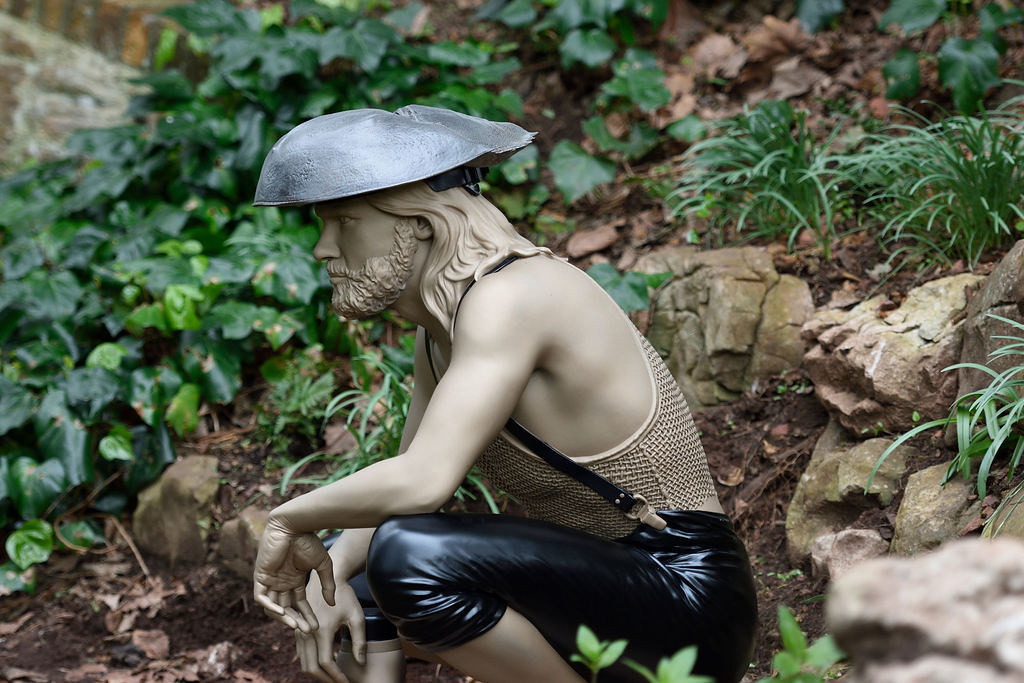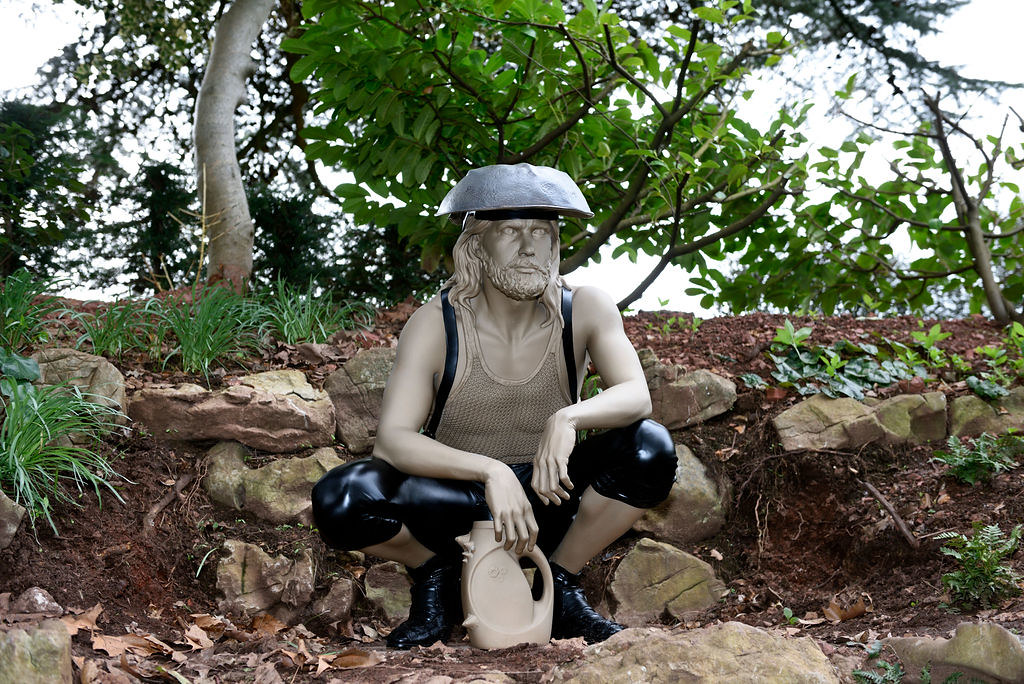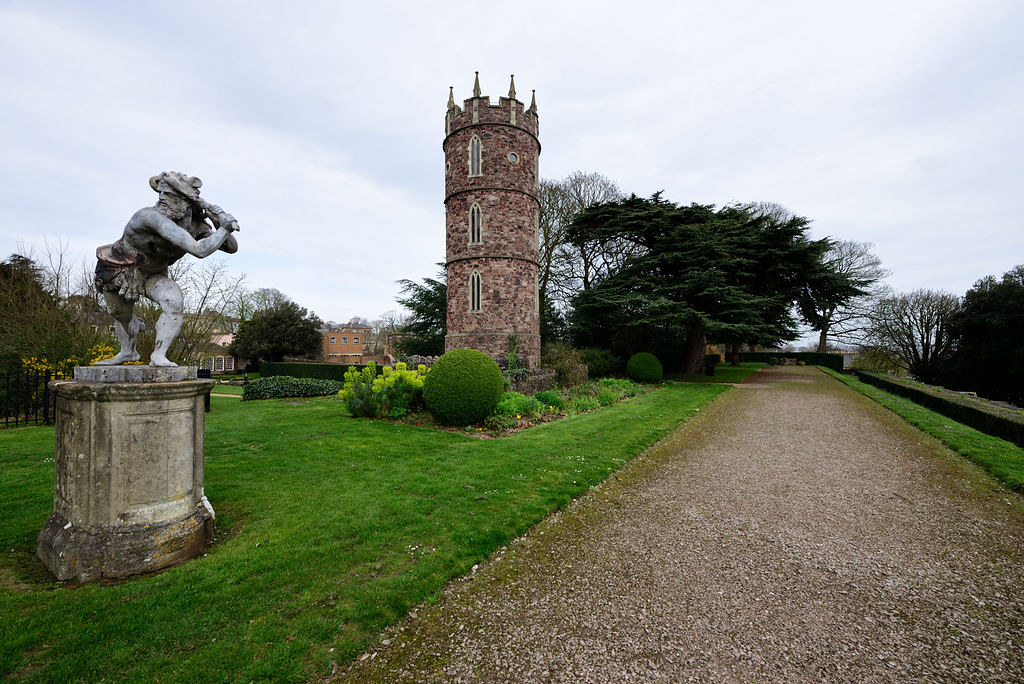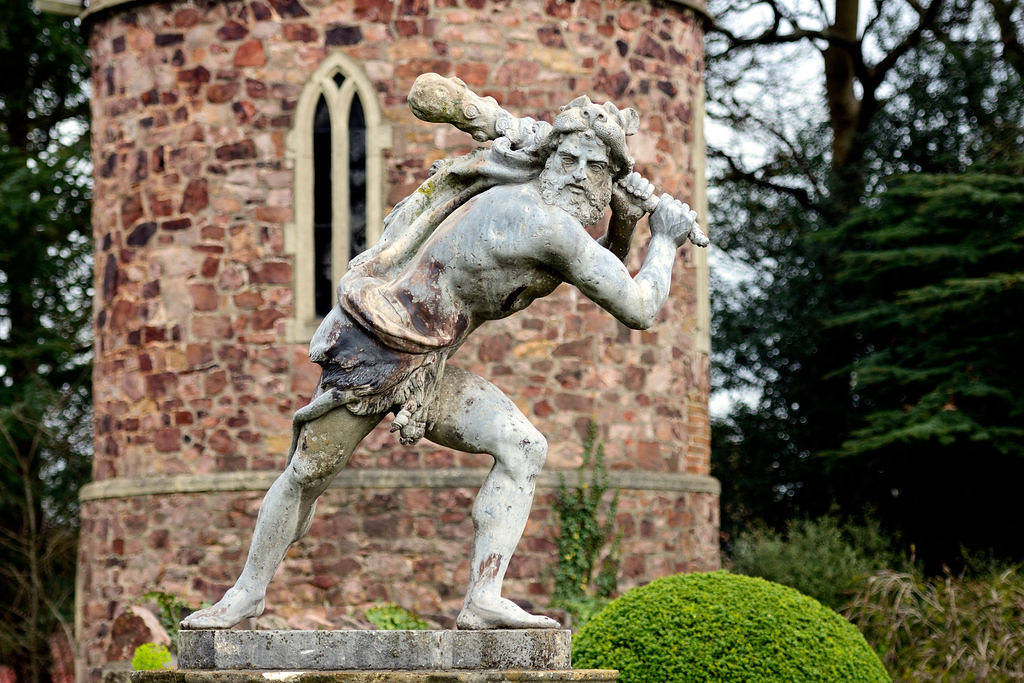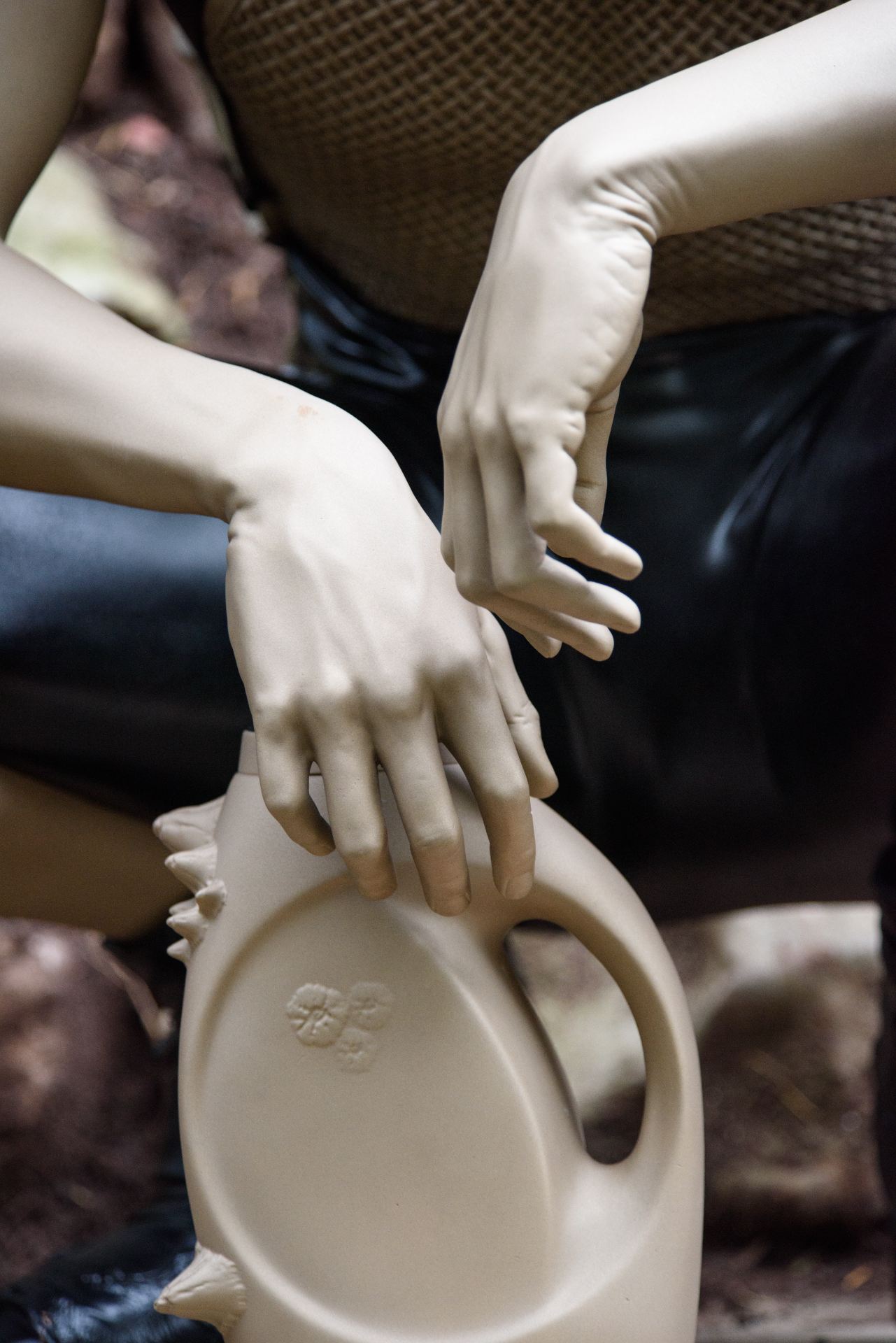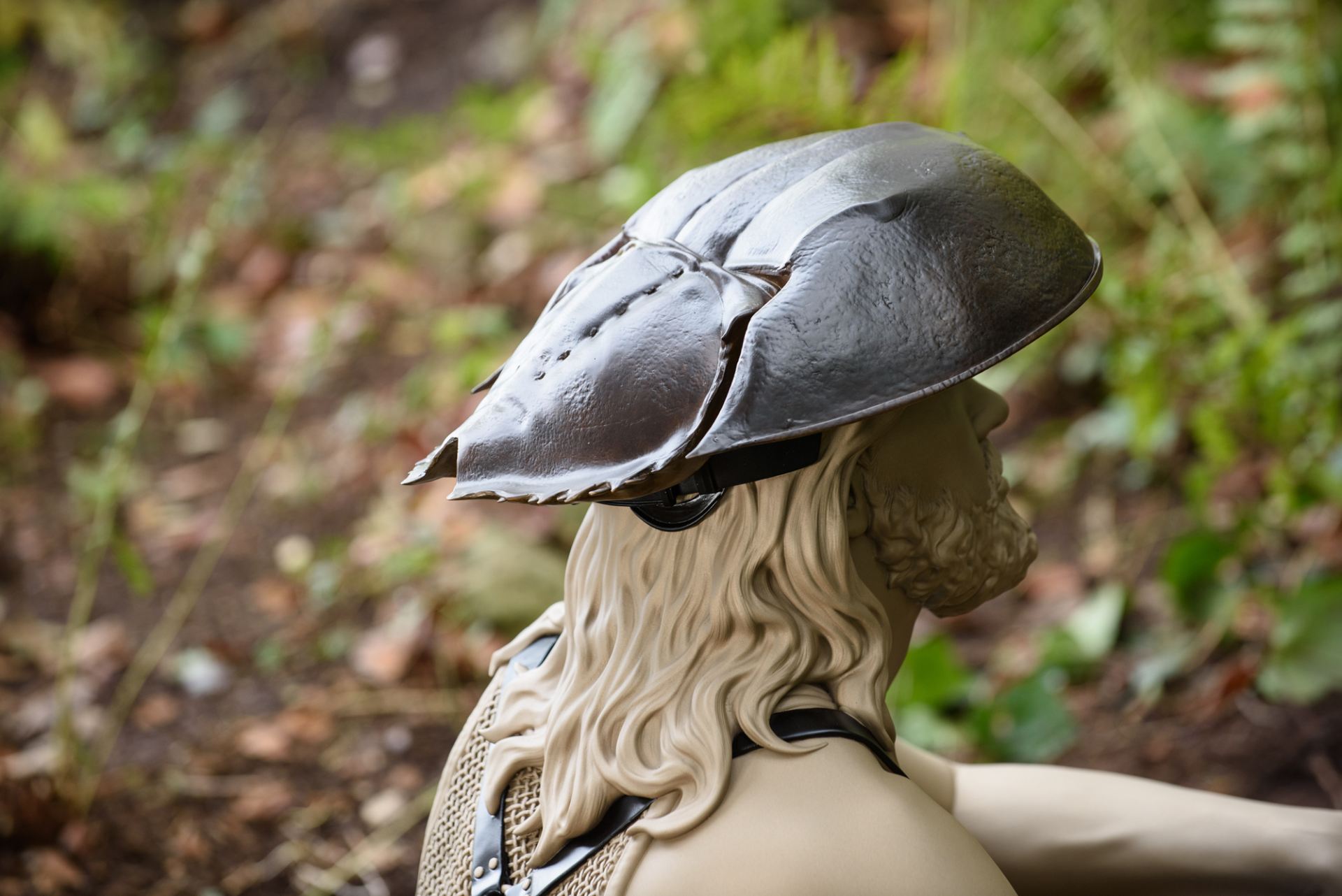Castaway is a depiction of a modern figure – a symbol of displaced and isolated people in the here and now. The work evokes an enduring fictional archetype – that of the solitary individual who makes do with the detritus of modern life, and gains a different understanding of society and the world in the process. This narrative offers an analogy for the contemporary artist who finds meaning – and a means of survival – by reimagining the found object.
In 2019 the University of Bristol was honoured to receive Castaway, Frank Benson’s first UK public art commission.
The artwork was generously gifted to the University by Nuffield Health Bristol , The Chesterfield Hospital, the original commissioners of the work. Castaway was produced by Willis Newson art consultants with generous support from the artist’s gallery Sadie Coles HQ.
On the one hand this life-sized, bronze, portrait of a man, references the classical sculptures sited nearby in Goldney Gardens, in particular the 18th century Hercules sculpture made of whitened lead on a stone plinth nearby.
In contrast, the crouched pose and flawless painted surface of Castaway create an uncanny, and very contemporary, illusion of reality. Made of Bronze, Castaway was created using a combination of digital photography, 3D scanning, sculpting, and printing technologies.
In his work Benson has investigated manufacturing processes and the suspension of movement through hyper-realistic sculptures and photography. He derives inspiration from both consumer goods and nature.
The figure is squatting; he is as small and compact as he would be if hiding or about to catch some game. This unconventional pose, not often seen in the sculptural tradition, is familiar, a very human pose. This confuses the viewer; it holds our gaze.
The artist shows us what someone might look like if they were stranded on an island now. This figure was based on a model, whose distinctive look and eclectic outfits matched the type of creativity you would need to survive on an island, according to the artist. He is making do with the detritus of modern society; the strap holding the crab shell helmet on, the discarded detergent bottle, washed up onto the shore.
There are personal references with the found objects too – growing up in Virginia USA horseshoe crabs would wash up on the shore a lot and Benson would take them and incorporate them into costumes.
Castaway is one of the latest additions to the University of Bristol’s growing collection of Public Art through which we seek to work and engage more closely with communities and partners across the city of Bristol.
Our planned new Library will be the epicentre of cultural engagement at the University of Bristol and a hub for activity underpinning our role as a civic university.
It will be a welcoming and inclusive space where students, academics and the public can engage with our cultural collections both onsite and offsite through the Library’s innovative programme of outreach activities.
Much like Castaway invites us to do, our collections offer a lens through which we are able to gain a deeper understanding of ourselves and the society in which we live.
In combination with our Public Art engagement activities, installations like Castaway across the University will play a key role in connecting with and drawing in new audiences.
Frank Benson
Frank Benson (b. 1976, Virginia, USA) studied at Maryland College of Art, Baltimore (1998), and for a Master of Fine Arts at the University of California (CA) (2003).
The artist lives and works in Brooklyn, NY. Benson’s three-dimensional and photographic works both reflect a sustained fascination with concepts of arrested movement and the use of digital tools in the creation of sculpture, and the artist frequently works at the fore of advancing digital media technologies.
Increasingly, he has employed high-tech software in the production of works – for example translating photographs of human models into meticulously-crafted ‘wireframe’ virtual models and 3-D prints, that serve as the basis for hyper-real and minutely-finished statues, as seen in his celebrated sequence of Human Statue figures (begun in 2005).
Willis Newson
Willis Newson is a leading Bristol-based independent arts consultancy specialising in creative approaches to improving health and wellbeing.
It develops public art strategies for new builds and refurbishments, develops, manages and curates public art plans and public engagement programmes, delivers training for artists and performers in healthcare settings and provides advice and guidance on the design and implementation of projects to promote healthy environments and improve health and wellbeing.
Location and access
- Google maps location: Goldney Gardens, Lower Clifton Hill, Bristol, BS8 1BH
- What3words location: loving.cool.noises
Castaway is sited In Goldney Garden, on a bank near to the canal and can be viewed from an accessible gravel path known as the Serpentine Walkway. Goldney Garden is currently open to the public by appointment as part of a Historic Garden Tour.
For current information about opening times and or to make an appointment to visit Castaway please contact: public-art@bristol.ac.uk.
This historic garden is tucked away behind Goldney House (listed grade II), located in Clifton Wood. It includes a heritage orchard, an ornamental garden, an orangery, a canal and tower, a rotunda and bastion, Corinthian columns and an elaborate grade I listed grotto, described as the finest surviving example of an early eighteenth century garden grotto in Britain.

